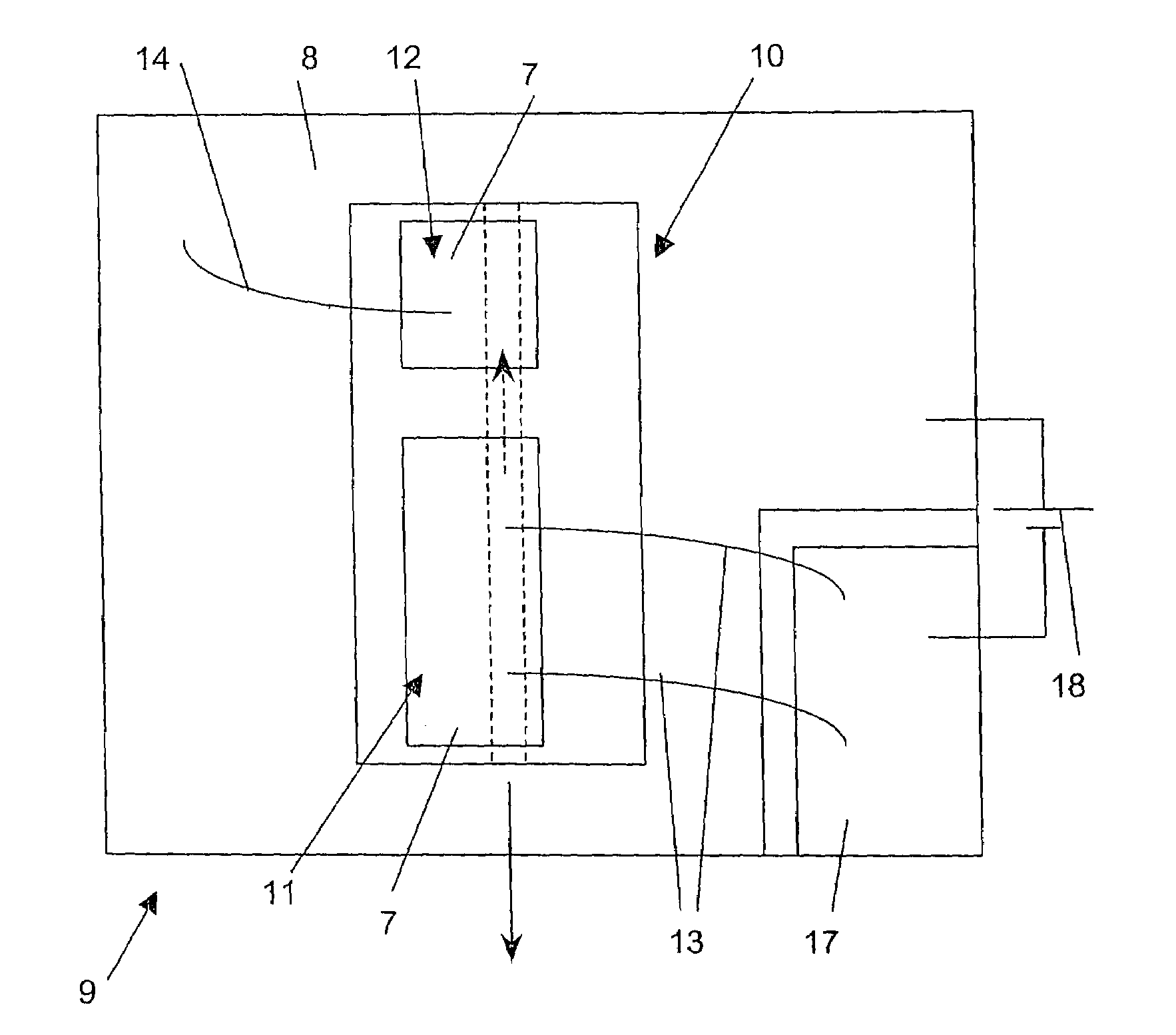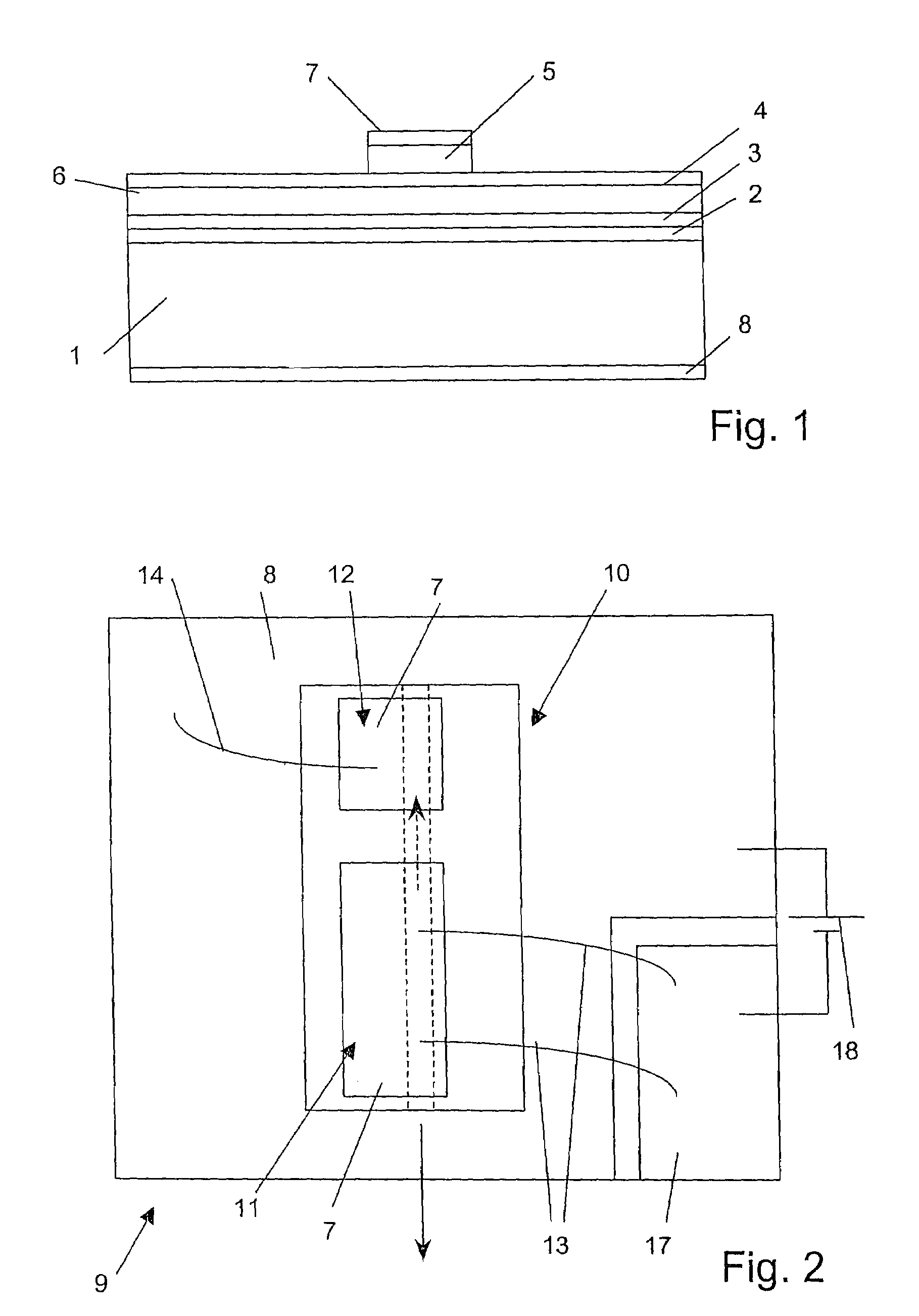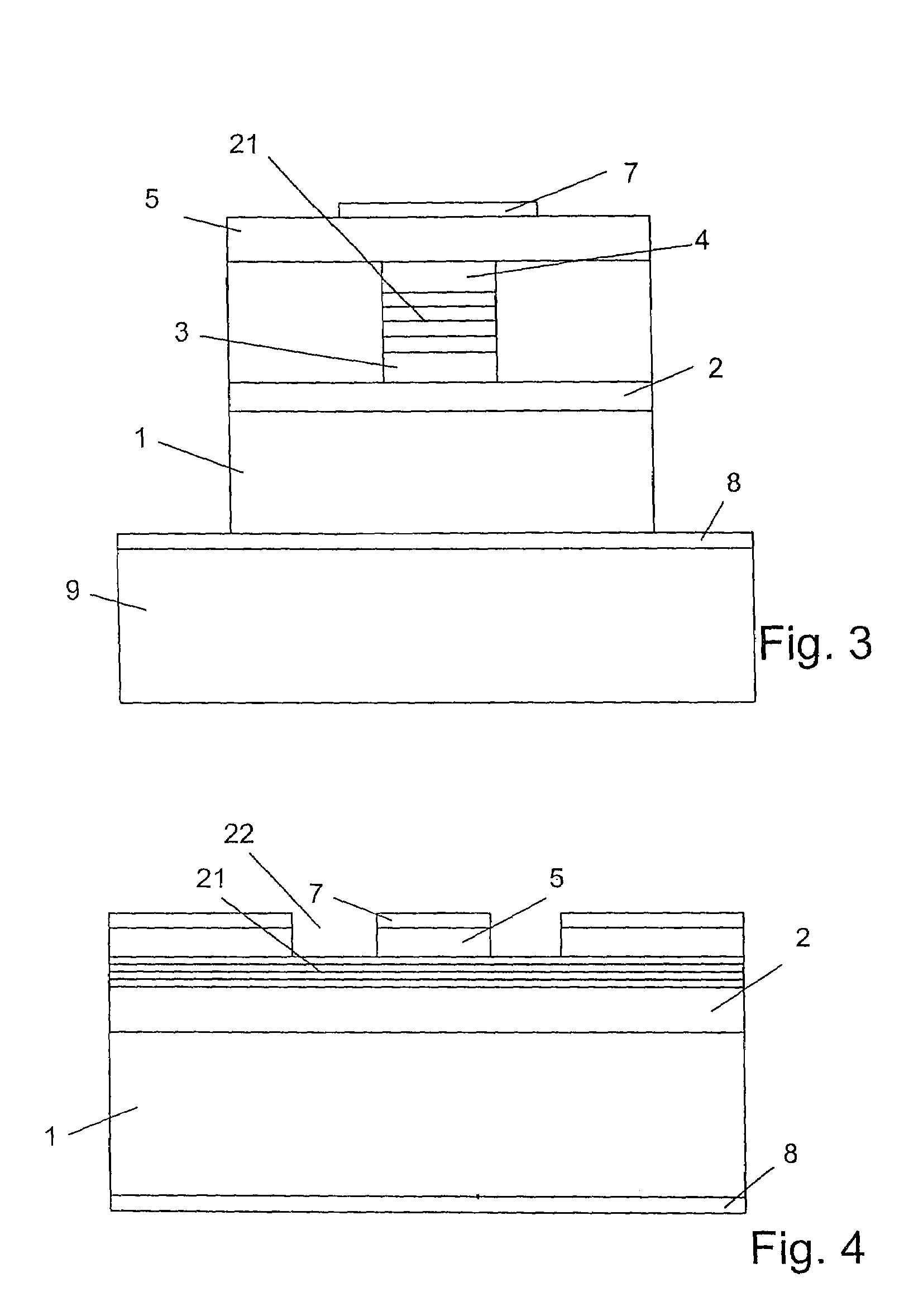Sled
a technology of superluminescent light and sled, which is applied in the direction of diodes, electric devices, solid-state devices, etc., can solve the problems of difficult to package sled devices by standard production methods, and achieve the effects of low manufacturing cost, high output intensity, and reliably avoiding lasing action
- Summary
- Abstract
- Description
- Claims
- Application Information
AI Technical Summary
Benefits of technology
Problems solved by technology
Method used
Image
Examples
Embodiment Construction
[0019]The device schematically shown in FIG. 1 comprises a semiconductor heterostructure including a GaAs substrate 1. The substrate comprises an Si-doped (the Si doping here being an n-doping) InGaP semiconductor cladding layer 2. On top of the Si-doped cladding layer, a layered structure forming a PN-junction is placed. In the shown embodiment, the PN-junction is formed by an undoped InGaAsP ‘bulk’ structure layer 6, between an Si-doped InGaAsP cladding layer 3 and a Zn-doped (the Zn-doping being a p-doping) InGaAsP cladding layer 4. The layered structure is covered by a Zn-doped InGaP cladding layer 5. The indexes of refraction of the n-doped and the p-doped cladding layers 3, 4 are higher than the index of refraction of the active ‘bulk’ layer 6, so that a waveguide is formed for light generated in the PN junction upon injection of a current. Lateral confinement is achieved by a ridge waveguide structure (weakly index guided structure). For injecting a current, the device compri...
PUM
 Login to View More
Login to View More Abstract
Description
Claims
Application Information
 Login to View More
Login to View More - R&D
- Intellectual Property
- Life Sciences
- Materials
- Tech Scout
- Unparalleled Data Quality
- Higher Quality Content
- 60% Fewer Hallucinations
Browse by: Latest US Patents, China's latest patents, Technical Efficacy Thesaurus, Application Domain, Technology Topic, Popular Technical Reports.
© 2025 PatSnap. All rights reserved.Legal|Privacy policy|Modern Slavery Act Transparency Statement|Sitemap|About US| Contact US: help@patsnap.com



